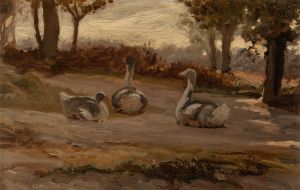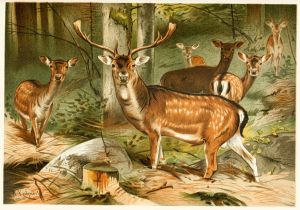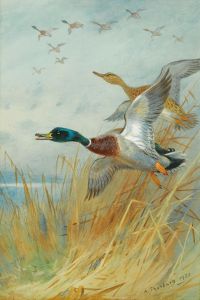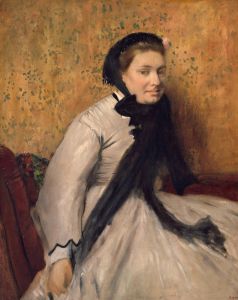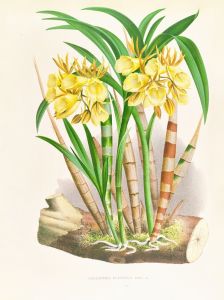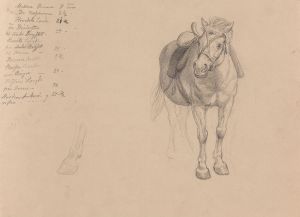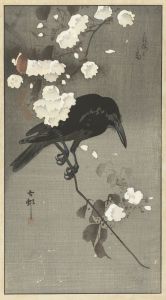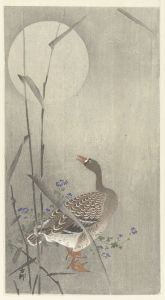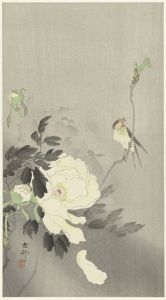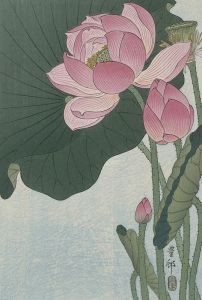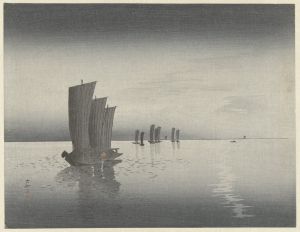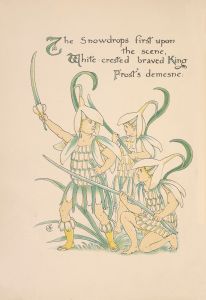
Two gray starlings
A hand-painted replica of Ohara Koson’s masterpiece Two gray starlings, meticulously crafted by professional artists to capture the true essence of the original. Each piece is created with museum-quality canvas and rare mineral pigments, carefully painted by experienced artists with delicate brushstrokes and rich, layered colors to perfectly recreate the texture of the original artwork. Unlike machine-printed reproductions, this hand-painted version brings the painting to life, infused with the artist’s emotions and skill in every stroke. Whether for personal collection or home decoration, it instantly elevates the artistic atmosphere of any space.
Ohara Koson (1877–1945) was a prominent Japanese artist known for his exquisite woodblock prints, particularly those depicting birds and flowers, a genre known as kachō-e. His work is highly regarded for its delicate beauty and attention to detail, and he is often associated with the shin-hanga ("new prints") movement, which sought to revitalize traditional Japanese woodblock printing techniques in the early 20th century.
"Two Gray Starlings" is one of Koson's notable works, showcasing his skill in capturing the essence of avian subjects. The print features two gray starlings perched on a branch, rendered with meticulous detail and a keen sense of composition. Koson's ability to convey the texture of the birds' feathers and the subtle gradations of color in their plumage is a testament to his mastery of the woodblock printing technique.
Koson's prints are characterized by their harmonious balance of color and form, often depicting serene natural scenes that evoke a sense of tranquility and appreciation for the beauty of the natural world. In "Two Gray Starlings," the artist employs a limited color palette, which enhances the elegance and simplicity of the composition. The background is typically understated, allowing the viewer to focus on the intricate details of the birds themselves.
The shin-hanga movement, to which Koson contributed significantly, was a response to the decline of traditional ukiyo-e printmaking in the face of modernization and Western influence. Artists like Koson sought to preserve the traditional techniques while also incorporating elements that would appeal to both Japanese and Western audiences. This movement was instrumental in the resurgence of interest in Japanese prints during the early 20th century, both domestically and internationally.
Koson's work, including "Two Gray Starlings," gained popularity not only in Japan but also in the West, where collectors and art enthusiasts appreciated the unique blend of traditional Japanese aesthetics and modern sensibilities. His prints were often exported and became part of numerous collections worldwide, contributing to the global appreciation of Japanese art.
Despite the challenges faced by traditional printmakers during his time, Koson's dedication to his craft and his ability to adapt to changing tastes ensured that his work remained relevant and admired. Today, his prints are highly sought after by collectors and continue to be celebrated for their artistic merit and historical significance.
"Two Gray Starlings" exemplifies Ohara Koson's legacy as a master of the shin-hanga movement, capturing the delicate beauty of nature with precision and grace. His work remains an enduring testament to the rich tradition of Japanese woodblock printing and its ability to transcend cultural and temporal boundaries.





